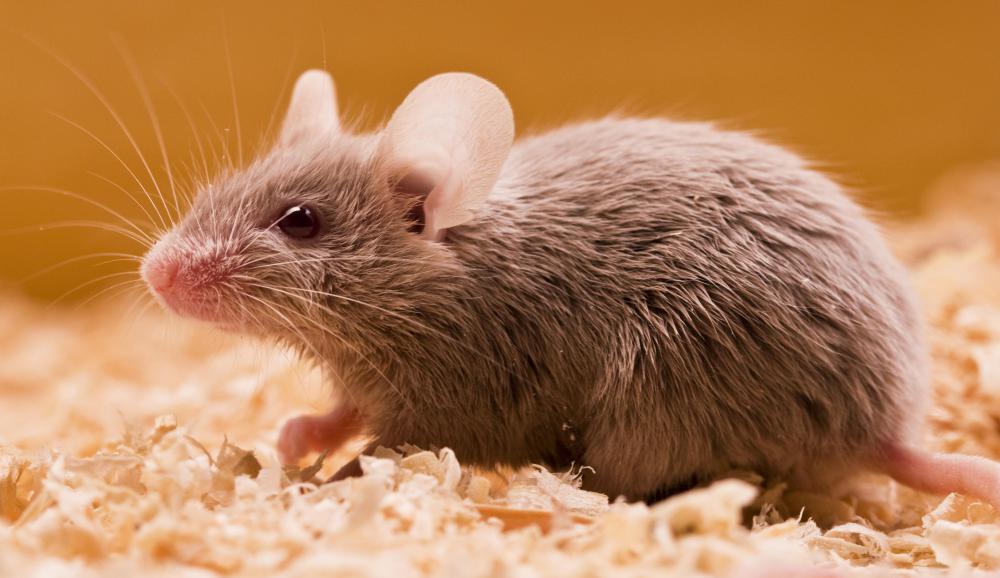At AllThingsNature, we're committed to delivering accurate, trustworthy information. Our expert-authored content is rigorously fact-checked and sourced from credible authorities. Discover how we uphold the highest standards in providing you with reliable knowledge.
What Is an Amelanistic Corn Snake?
The amelanistic corn snake is an albino corn snake, one that is lacking black pigment. This causes some to show color brightly, and therefore many people keep them as pet snakes. Red, orange, yellow and white variations of the amelanistic corn snake are found. It falls under the scientific species Elaphe guttata with other corn snakes and is found mainly in the southeastern and central regions of the US. Corn snakes are sometimes also called red rat snakes.
Various variations of the amelanistic corn snake have been bred to obtain beautiful skin colors. They tend to have soft skin, speckled with color and an underbelly resembling corn. Due to the lack of black pigment, their eyes are red. In general, they are docile in nature and slow to bite thus increasing their popularity as pet snakes.

Although they are called the amelanistic corn snake, this is not due to their feeding habits. The snakes normally eat frogs, lizards, birds and small rodents. When kept as pets, they are usually fed mice once or twice a week. If they are fed live mice, they will naturally kill them by constriction before eating them. It is important to get professional advice on feeding if keeping an amelanistic corn snake as a pet as they are prone to obesity if overfed.

In the wild, the amelanistic corn snake prefers overgrown fields, forested areas and rocky hillsides. They generally stay on the ground although, sometimes, they may climb trees. They are mainly active at dusk, night, or dawn and those living in colder climates may hibernate throughout winter. If keeping an amelanistic corn snake as a pet, it is important to get advice on the cage in which you will keep it.
After mating, the female will lay between 12 and 24 eggs in a warm, moist place, where she will leave them. The mother snake then plays no further role in the upbringing of the babies. The baby snake will use its egg tooth to slit the egg shell after about ten weeks and will eat the yolk of the egg as its first meal before emerging. In captivity, the baby snakes will normally shed their first skin after about a week and feeding should begin after this.
As with any pet reptiles, it should be remembered that snakes are intrinsically wild. Before getting an amelanistic corn snake as a pet, professional advice should be sought regarding housing, feeding and care. Handling of the snake should be done carefully and infrequently.
Frequently Asked Questions
What is an amelanistic corn snake?
An amelanistic corn snake is a genetic variant of the common corn snake that lacks melanin, the pigment responsible for dark colors. This results in a snake with bright reds, oranges, and yellows, as the absence of black or brown pigments allows these colors to show more vividly, giving the snake a striking appearance.
How does amelanism differ from albinism in corn snakes?
Amelanism and albinism both involve a lack of melanin, but they are not identical. Amelanism is the absence of melanin specifically, while albinism refers to a lack of all types of pigments. Albinos also typically have pink or red eyes, whereas amelanistic corn snakes can have different eye colors due to the presence of other pigments.
Is the amelanistic trait harmful to corn snakes?
The amelanistic trait is not inherently harmful to corn snakes. However, it can make them more vulnerable in the wild due to their bright colors, which can attract predators. In captivity, where predators are not a concern, amelanistic corn snakes can live healthy lives comparable to their normally pigmented counterparts.
Can amelanistic corn snakes be found in the wild?
Amelanistic corn snakes can be found in the wild, but they are rare. Their bright coloration makes them more noticeable to predators, which often leads to a shorter lifespan. Most amelanistic corn snakes are bred in captivity, where breeders can ensure their safety and cater to the pet trade's demand for unique morphs.
How do you care for an amelanistic corn snake?
Caring for an amelanistic corn snake is similar to caring for any corn snake. They require a suitable enclosure with appropriate temperature gradients, humidity levels, and hiding spots. A diet of appropriately sized rodents, typically mice, is necessary for their health. Regular handling can help maintain their docility and comfort with human interaction.
Are amelanistic corn snakes more expensive than normal corn snakes?
The price of amelanistic corn snakes can vary, but they are often more expensive than normal corn snakes due to their unique appearance and popularity among collectors and enthusiasts. The exact price can depend on factors such as age, size, and overall health, as well as the breeder's pricing.
AS FEATURED ON:
AS FEATURED ON:












Discuss this Article
Post your comments